19th c AYMARA INDIAN BLANKET Incredible Rare Unique Navajo Likeness TM9820

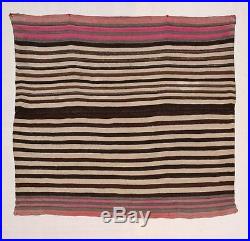
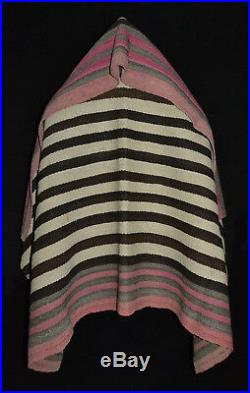
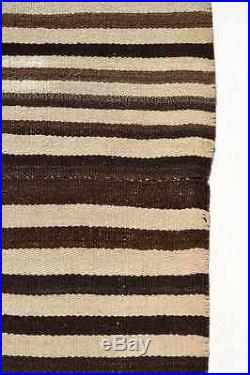
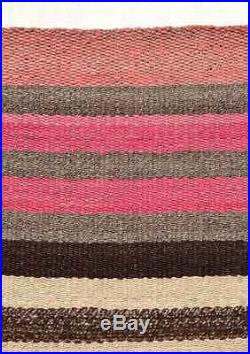
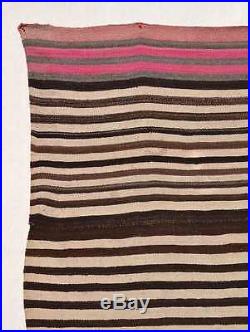
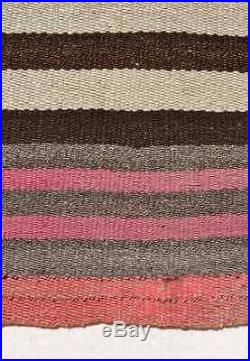
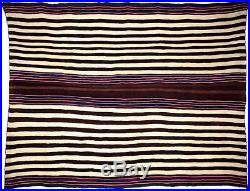

Experts in Finding Rare Tribal Art for Your Collecting Interests. AN EXTRAORDINARY ANTIQUE AYMARA INDIAN BLANKET FROM THE BOLIVIAN ALTIPLANO. Origin: Probably southern Pacajes Province, high Altiplano above 12,500 feet, Department of La Paz, Bolivia, South America. This special offer consists of an authentic indigenous Aymara-speaking-Native American hand-woven, warp-faced isi ikiña (also called chusa ikiña) shoulder blanket woven in two pieces that were joined together with a common seam. This is an especially important textile not only for its visual charm but also for its unique, mysterious iconography. This is an awesome tribal blanket for its uncanny similarity to certain mid-to-late-19th century Navajo weavings, known generally as, ¨women´s first phase chief´s blankets¨ (see the last photo in our series). Most Navajo examples are worth about 200 to 300 times the value we have placed on this Aymara example. This beautiful Bolivian specimen, of course, is not a copy or an exact likeness to Navajo examples but it is so similar in certain aspects that an inquiry into such circumstances is warranted. In both, the divided field is filled with dark and light (black and white) stripes of equal width. When worn, the stripes run horizontally around the wearer´s body. Both have dark center bands and dark top and bottom bands. Shades of red are included in the predominant colors. The similarities are obvious. This analogous and extraordinary coincidence begs review on the part of tribal textile scholars to explain these iconographic similarities involving very distinct indigenous Indian groups some 7000 kilometers, or 4300 miles apart. We know that both kinds of textiles come from Native American sources living in desert-like environments; the Bolivian Altiplano physically resembles most of the Navajo Reservation in Arizona. Both groups are horticulturalists and domestic animal herders (the Navajo raise sheep; the Andean Indians raise sheep, llamas and alpacas). Both groups are famous for their weaving arts. Historical evidence suggests that the blankets were produced in traditional, isolated settings with nary possibility of contact between the two ethnic groups during their time frames of production. Thus, explaining why those artistic similarities exist between blankets of distinct American Indian cultures is puzzling and stimulating. There are undoubtedly myriad such similarities among indigenous material culture throughout the world that also beseech serious investigation. This old blanket was woven with stripes of dark brown (blackish), cream, salmon (faded) and berry red (faded) colors. The original center seam joining the two halves is in excellent condition. This textile is well-woven with about 22 warps per inch and 5 1/2 wefts per inch. It is a warp-faced textile woven on a horizontal, staked ground loom with stretched poles traditional Navajo blankets are weft-faced and woven on vertical looms with stretched, horizontal poles. Andean blankets of this age are exceedingly difficult to encounter and are rarely found in this condition. This is a relatively lightweight, beautiful textile that is just a pleasure to behold and examine. It is a very wonderful example of an historic Aymara Indian shoulder blanket that is likely irreplaceable. Please refer to the ANDES AMAZON “DATING” TERMS. Materials: Hand-spun natural and dyed sheep wool. Approximate Size: 67 inches by 59 inches. Condition: EXCELLENT, used condition. The dyed colors have faded significantly from age. There are numerous small and very light use-stains that do not distract significantly from the aesthetics of the blanket. These light stains ARE NOT as apparent ¨in the hand¨ as they might appear in the photos. Nevertheless, professional cleaning would undoubtedly improve the condition. There are no holes or significant worn spots. Please refer to the photos for any minor defects and the ANDES AMAZON TEXTILE “CONDITION” TERMS. The disadvantage is that items will not arrive quickly. Since the shutdown of the U. Government earlier this year, the arrival time to the U. Is now around three weeks and to Europe and Asia is approximately six to eight weeks. Our offices are not in close proximity to international postal service. ANDES AMAZON “DATING” TERMS. PREHISTORIC, PRE-COLUMBIAN, ANCIENT = Before around A. 18TH CENTURY = A. 19th CENTURY = 1800 to 1899. TURN OF THE 19TH CENTURY = 1890 to 1910. EARLY-20TH CENTURY = 1900 to 1933. MID-20TH CENTURY = 1934 to 1966. LATE-20TH CENTURY = 1967 to 1999. TURN OF THE 20TH CENTURY = 1995 to 2005. EARLY-21ST CENTURY = 2000 to Present. ANTIQUE = Over 50 years old. VINTAGE = Over 30 years old. CONTEMPORARY = Made in the last 5 years. CIRCA = Approximately/around/within a few years of. ANDES AMAZON TEXTILE CONDITION TERMS. Terms used to describe the physical condition of textiles can be subjective and vary greatly from one observer to another. What some others call mint condition, we call good; what others call excellent condition, we call fair. Following are explanations of the terms we use. MINT = Like new. Unused — as if recently removed from the loom. No wear or patina of any kind. These textiles may have nubs or even loose, uncut threads from the weaving process. EXCELLENT = Usually only lightly used, often guarded or stored for many years. There may be extremely light wear, patina and sheen from use. There may also be nearly undetectable light staining or soiling from use. The colors may have muted ever so slightly due to age or exposure, often improving the beauty of a textile. VERY GOOD = Usually lightly or only periodically used. The surface may be very lightly but evenly worn. There are no tears or distracting holes. There may be minimal surface discoloration. Vintage textiles may have lightly darkened yarn from use and age (staining and soiling). Overall, the textile will be in outstanding condition and at a displayable distance will appear perfect. GOOD = Usually moderately to well-used. There may be light to medium staining, isolated or throughout. Some parts of the textile may be worn or have very small holes, occasionally exposing hidden thread yarns. Edges may be lightly frayed. Surface discoloration due to age and exposure is common but often improving the appearance of a textile. There may be minor, light or isolated, dye run. Damage will not distract significantly from the textile when displayed. FAIR = Either well-used or moderately abused. Extensive wear is common as is some bleeding or dye run. In most 20th century cases, the colors have considerably faded. Sections of fringe or tassels may be missing. Textiles may be in otherwise excellent condition but with a single isolated sector of damage, that greatly reduces its aesthetic appeal. Most vintage tribal textiles on the market are in FAIR TO GOOD condition. POOR = Showing evidence of extreme usage and damage. These textiles do not display well and are primarily useful as study specimens or examples of sometimes very rare textiles. We believe the world can be a better place. We believe that humanity has a higher, aspiring destination. We know that through mutual respect conflicts will subside. We know that by understanding our differences we can help one another. We believe that our Mother Earth and our Universe can provide unlimited resources for every man, woman and child to live in peace, happiness and love. As stewards of the human race we have an intrinsic responsibility to do what we can to improve our world as much as possible. The majority of human existence has been dominated by so-called Native groups, also known as tribal folk, original residents, indigenous people, aboriginals, First Nations, traditional ethnicities, autochthonous societies, autochthonal cultures, et. At some point, of course, our ancestors were the same regardless of current culture, creed or color. Regrettably, in the past half a millennium, thousands of unique tribal groups have disappeared due to misunderstanding, impudence and ethnocentrism. Aspects of colonialism, capitalism, racism and politicization have directly and circuitously destroyed myriad native cultures, each a once-valuable resource to our planet. Of the nearly 7000 languages currently spoken on our planet, over 6000 are in immediate danger of becoming extinct. Nearly all, being ethnic indigenous. We believe the very few Native groups that remain on earth should be cherished and carefully supported. Unfortunately, we are on the brink of losing our connection with indigenous spirit, wisdom and traditional knowledge. For more than a quarter-century those of us behind AKATAKSA/ANDESAMAZON have dedicated our professional interests in documenting traditional South American indigenous cultures, especially through their material culture. Our field studies have led us to some of the most remote people on the continent. We have witnessed Native Americans existing exactly as their ancestors did in prehistoric times and others who have jumped from 18th-century existence to 21st-century reality in the blink of an eye. Our ethnographic investigations have resulted in preserving valuable data related to linguistics, cultural history, ethno-environmental relationships, socio-cultural organization, cosmology, mythology, spirituality and of course, material culture. We have a detailed proposal for a magnificent cultural center-museum aimed at stimulating interest in past and present indigenous cultures. Our unique idea is not just to show beautiful objects on display. Ours is to share the entire background of a piece, not only from a scientific or scholarly point of view but also from a cultural and spiritual perspective as well. This holistic approach to understanding indigenous material culture shall include accompanying photographs, films, recorded testimonials, music, related specimens and even field notes. We want to inspire our visitors to continue their own investigations into realms of mysterious phenomena that we really know very little about. Apart from receiving monies for researching indigenous material culture, our sales contribute toward expanding interest in past cultures and ways of life. Not only can ones´ personal environment be enhanced with beautiful and interesting objects, but the benefits of knowing about different ideologies, unique ways of life and past or nearly-extinct traditions are utterly invaluable. We hope that whatever understanding, knowledge and insights are obtained from our objects will be shared with companions, friends and especially children. In this small way, we feel inspired in preserving something of native cultures and making the world a better place. Thanks for working with us. THANK YOU FOR YOUR INTEREST AND SUPPORT. The item “19th c AYMARA INDIAN BLANKET Incredible Rare Unique Navajo Likeness TM9820″ is in sale since Thursday, December 27, 2018. This item is in the category “Antiques\Ethnographic\Native American”. The seller is “andesamazon” and is located in Santa Cruz, . This item can be shipped worldwide.
